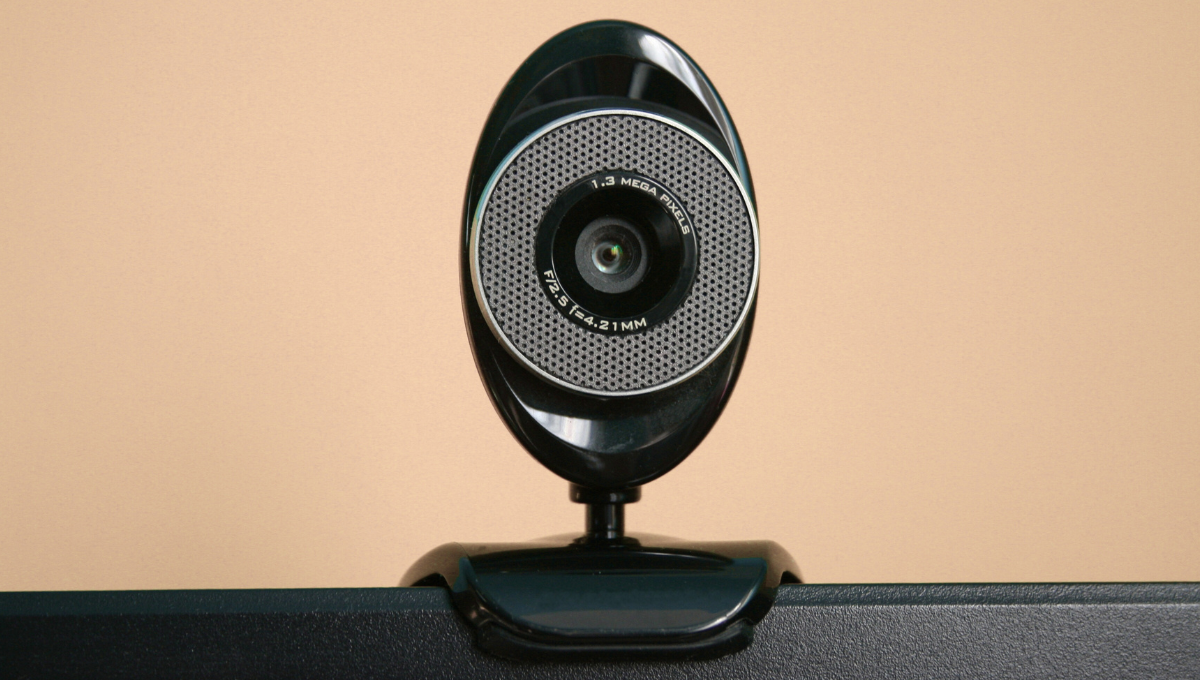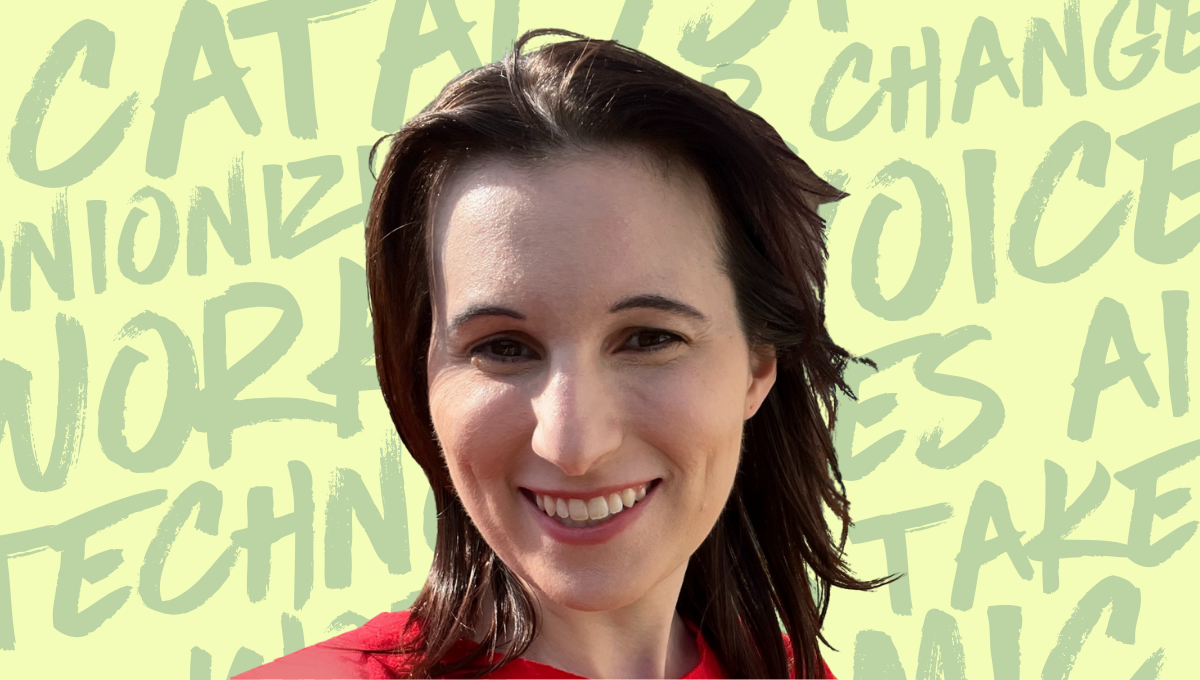How companies make money tracking you

Remember the 2018 Cambridge Analytica scandal?
The voter-profiling company scraped people’s personal data without their consent to build profiles of them and then target them as part of the 2016 presidential election.
Despite the scandal, digital surveillance is more prevalent than ever in 2025, monitoring us throughout our entire life cycles. Why?
When we talk about surveillance, the emphasis is usually on privacy and safety. It’s the right to scroll without judging eyes or to not have someone ogle you through a smart home device.
But companies aren’t surveilling us just to violate our privacy and make us feel unsafe. They’re not doing it just to mess with our democracy. They’re surveilling us to make money off of our existence. This is how:
What is surveillance tech?
Generally speaking, surveillance technologies are used to collect information about people’s lives, including their behavior, activities, and connections. These technologies can take many forms, from cameras to web crawlers.
We categorize surveillance technologies into four main categories based on the type of technology and the context in which it’s being used: digital, movement, biometrics, and workplace.
Digital
Companies build comprehensive digital profiles on individuals by connecting by tracking their digital activity.
Searching for a yellow shirt on a clothing website? You may get ads or targeted emails for it later. Were you also searching for divorce lawyers recently? Maybe you’ll get ads for an expensive yellow t-shirt under the assumption that you’re willing to spend more since you’re going through a major life change. A kind of creepy situation turns predatory fast when companies can connect your data dots.
That’s how Google was able to enable its ad buyers to target people with chronic illnesses, people in financial distress, and national security “decision-makers.”
Other digital surveillance includes:
Movement
Sometimes, when downloading apps, buying products, or opening accounts, people sign user agreements that grant permission to companies to collect and sell information like location and other movement-based data. Experts, though, question whether or not a person has truly given permission or even knows that their location information has been collected, let alone sold.
For instance, auto insurance companies have been purchasing data from automakers and third-party phone apps to track people’s driving habits, adjusting their insurance rates based on perceived risk. Most people, though, had no idea they were being tracked until they got a hyper-personalized car insurance offer.
Other movement surveillance includes:
- Motion detection—via cameras, heat sensors, or disturbances in radio frequency
- Airline travel data
- Collection of mobile location data from cell phones and WiFi routers
Biometrics
Biometric surveillance technologies—which surveil people’s physical, biological, and/or behavioral characteristics—get even more personal. Facial recognition tech is increasingly being used to identify people at the airport, crossing borders, and attending protests, despite researchers identifying the tech’s gender and racial biases.
Emotion recognition technology takes a step further, claiming to not only detect people but also discern the outer trappings of their inner world. This includes facial expressions as well as heart rate and skin moisture, which companies claim they can track via wearables.
Other biometric surveillance includes:
- Smart home apps that utilize fingerprint, facial, or iris recognition
- Walking pattern recognition (i.e., gait recognition)
- DNA analysis
Workplace
Employers are using many of these technologies to surveil workers. According to Top10VPN, demand for workplace surveillance technology—also referred to as “robo bosses”—rose over 50% between 2020 and 2025. In fact, 78% of employers surveil their remote workforce, and over one-third of employers specifically do so through a live video feed.
Infamously, Amazon warehouse workers are often subject to productivity management systems that constantly monitor them. These systems record every minute of “time off task,” and according to a 2022 labor dispute, warehouse workers can be fired if they accumulate 30 minutes of time off task within a 3-day period in a given year.
Other workplace surveillance includes:
- Keystroke logging and random screen captures
- Off-work social media monitoring
- Emotion recognition, such as stress or feelings towards coworkers
Why are we being surveilled?
Developing and purchasing most of these surveillance technologies is expensive. Nevertheless, private and public sectors alike continue to spend on surveillance tech in the hope of saving on costs and making money off our data.
Saving money
Companies may aim to save money by replacing some workers with surveillance tech, especially in human resources—even though it’s not necessarily cost-effective in the long run.
Many companies in food service and retail use software for setting schedules. Employers can monitor off-duty activity using social listening software to determine if someone poses a “liability” to the company and fire them accordingly. They can even feed this data into an algorithm to predict whether a job candidate will become a whistleblower.
Employers try to cut down on costs by paying employees based on surveilled work—measured, for instance, by keystroke tracking—instead of self-reported hours.
And, troublingly, employers can use surveillance systems to make it difficult for employees to unionize and advocate for higher wages, more benefits, and better working conditions.
Making money
The video surveillance industry alone was valued at over $57 billion in 2024 and is tracking to be valued at over $122 billion by 2031. The employee surveillance industry is also booming, backed by venture capital funding.
The data harvested using these surveillance technologies also fetches a pretty penny. In 2024, the data broker industry—which makes money from harvesting, storing, and selling our data—was valued at $389 billion.
Tech giants like Google and TikTok are some of the biggest players in the data broker industry, capturing and selling user data. They also use their first-party data to sell targeted ads
Ad revenue, in fact, is how many of the major social media companies make money. That’s why if you’re not paying for the product, you probably are the product. In 2021, Apple made it more difficult for social media companies to track users on their devices; this change resulted in Facebook reportedly losing $10 billion in revenue.
Companies are also able to make money off of the data they buy or collect by:
- Fluctuating prices based on individual demand and need, such as surveillance pricing
- Leveraging DNA data for scientific research, developing new medicines that they can sell to doctors and patients
- Improving surveillance tech or other tech, like AI systems, that can be sold to other companies, governments, and private individuals
How is the surveillance economy impacting your well-being?
All of these companies are using the surveillance economy to make money and cut costs. Even if the intention isn’t to harm people, even if you think you have nothing to hide or you like ads, the surveillance economy comes at the cost of all of our privacy, safety, and well-being.
Economic well-being
In the examples laid out so far, surveillance technology can be used to both pay you less and charge you more money for products and services.
Unfortunately, those two use cases are not alone.
Lenders increasingly use data ascertained through surveillance technologies—such as SAT scores, social media posts, and specific spending habits—to determine your creditworthiness. This means that your everyday actions can suddenly become highly consequential, determining your access to credit to pay for cars, housing, schooling, and more.
Physical well-being
Companies, governments, and even individuals can purchase your location data, putting your physical safety at risk, especially if you’re part of any marginalized groups.
Recently, in the US, Immigration and Customs Enforcement (ICE) contracted the surveillance company Palantir to track undocumented immigrants, including those who were self-deporting. Some of these immigrants are then incarcerated in inhumane conditions in the US and abroad, and/or deported to their “home countries” or even “third countries” to which they have no ties.
Emotional well-being
Surveillance technology can also impact your emotional well-being. Surveillance has been shown to increase anxiety and paranoia by heightening people’s own hyperawareness.
In leveraging surveillance technologies to make money, companies can also end up harming users emotionally. For example, in 2017, a leak from Meta’s Australia office revealed that it was tracking users’ emotional state and using that data to enable advertisers to target teens who felt “worthless.”
Collective well-being
In order to keep people on their platforms, social media companies also typically use algorithms that surveil your online activity so that they can feed you more of what you’re interested in—or more of what’s addictive—to make money.
On YouTube, that approach led many users to be recommended conspiracy and extremist content. And it’s not the only platform where this is happening; social platforms across the web spread misinformation and hate speech, intensifying the polarization in our society.
What can we do about it?
In the face of the massive surveillance economy, data nihilism can feel tempting. However, there are ways we can rebalance the scales in the economics of surveillance so that companies aren’t profiting from our data in ways that harm everyday people.
You can take measures to decrease the amount you’re surveilled so that companies, like the now-defunct Cambridge Analytica, can’t get their hands on your data.
Many states in the US also have privacy laws. In California, specifically, the major piece of privacy legislation is known as the California Consumer Privacy Act (CCPA). Under the CCPA, you have rights like the right to delete data from brokerage sites. You even have data rights as a worker.
At TechEquity, we’re championing regulations and policies that protect everyday people from the harms of the surveillance industry. This year, that includes California legislation such as the Automated Decisions Safety Act (AB 1018), which would create more transparency into what data is being used to make decisions about you. We’re also supporting these related California bills:
- The No Robo Bosses Act (SB 7), which would restrict the use of AI to manage employees
- AB 322, which would prohibit the sale of location data
- AB 446, which would limit surveillance pricing
- AB 1331, which would limit the surveillance of workers in bathrooms and break rooms
Sign up for our newsletter to get the latest updates on our legislative campaigns, as well as how you can help.
Has the surveillance economy impacted you? You can also contribute to our work by sharing your story. By sharing your experience, you can help lawmakers understand why they should support these bills to protect everyday people.
Share your story about surveillance
Share your experience with surveillance technologies in your workplace, home, or elsewhere. Write to us with your story and/or upload a video of yourself below.
"*" indicates required fields





